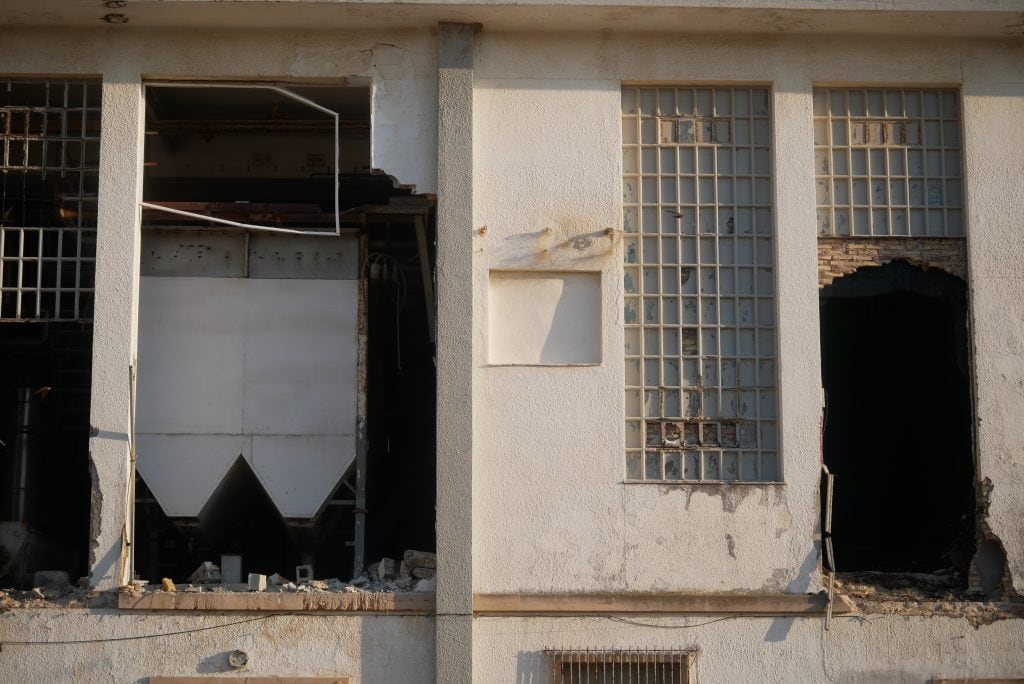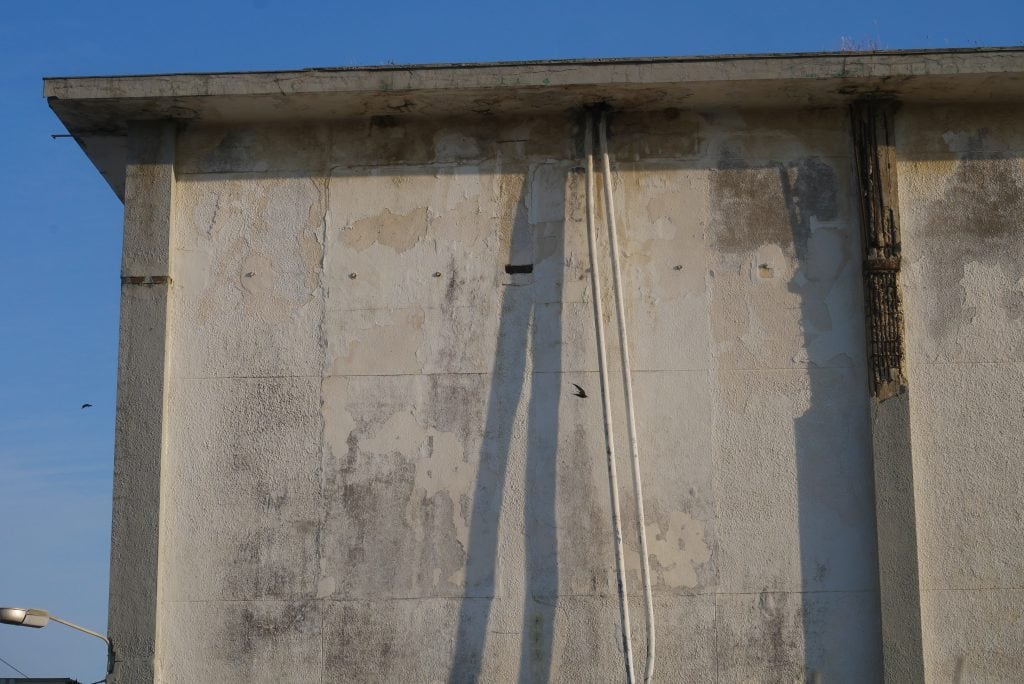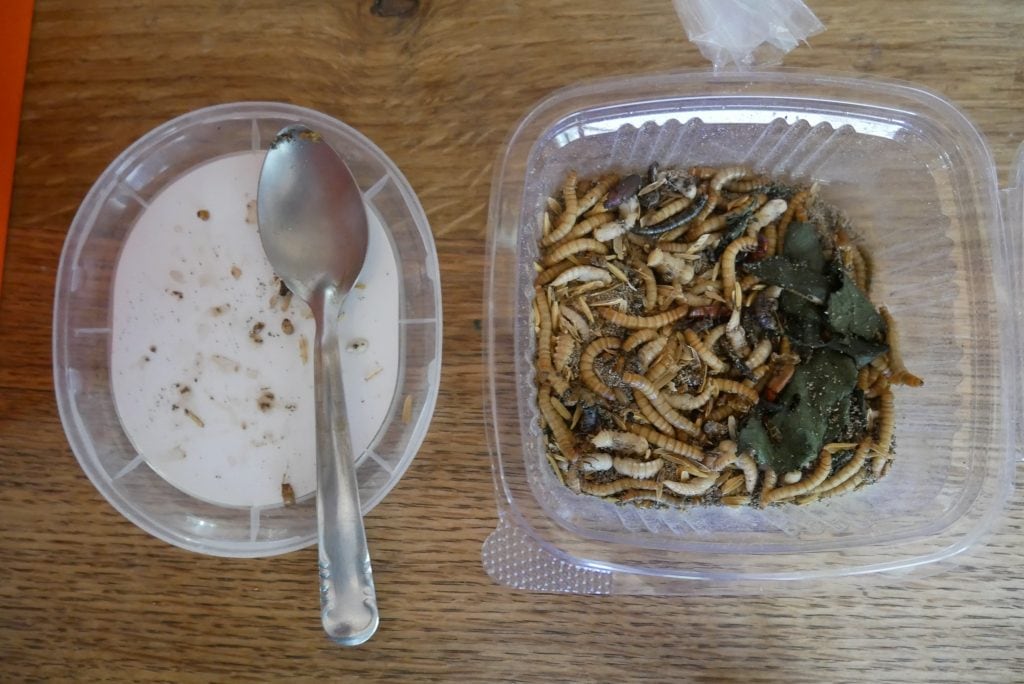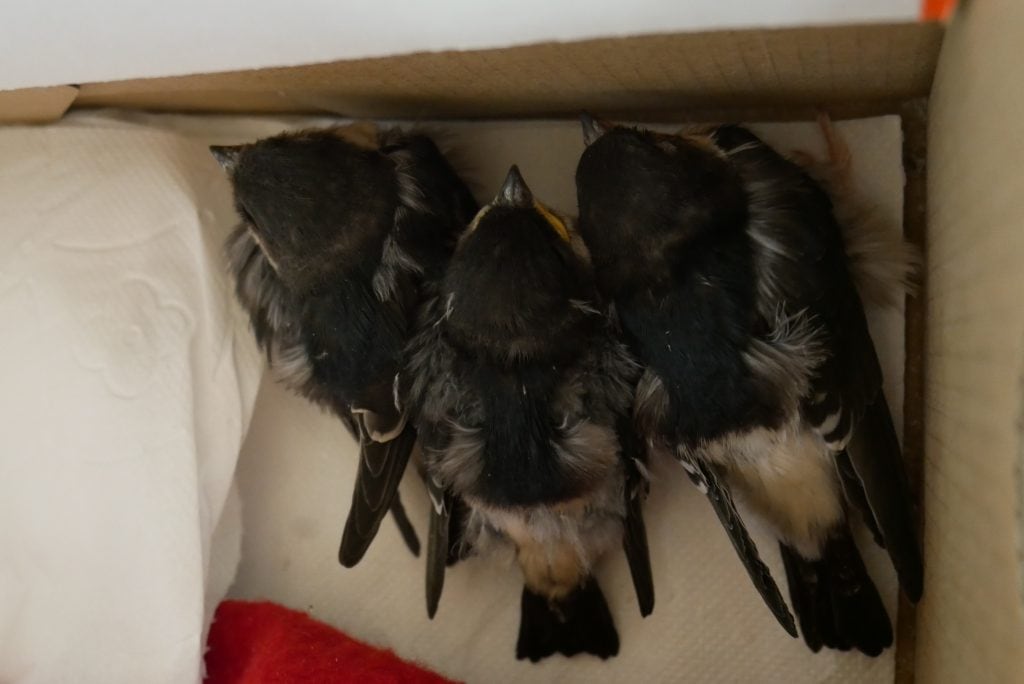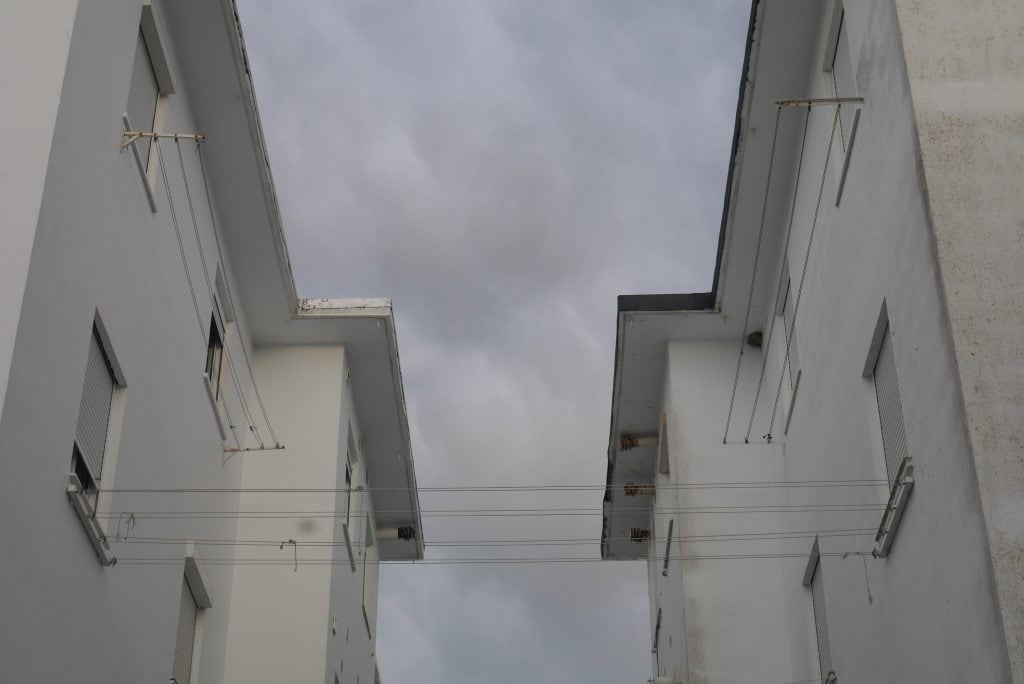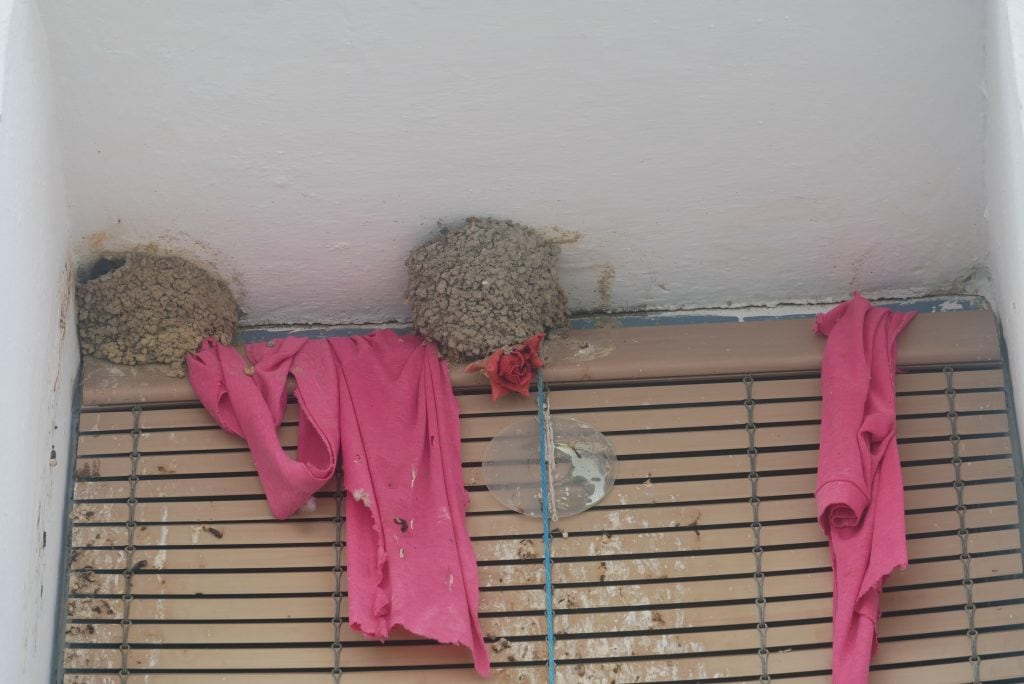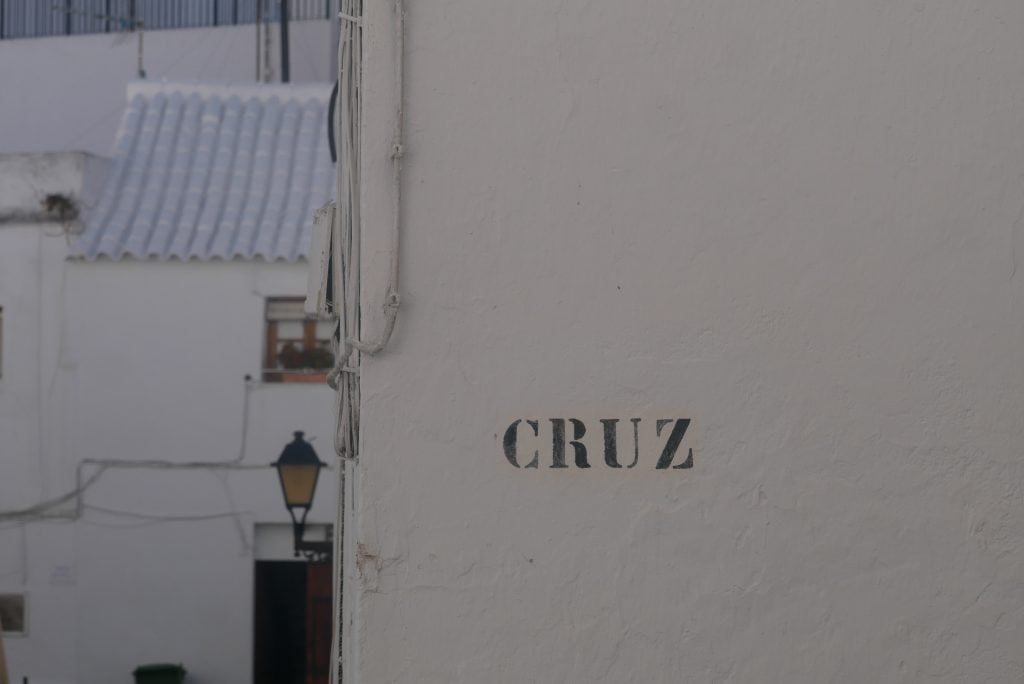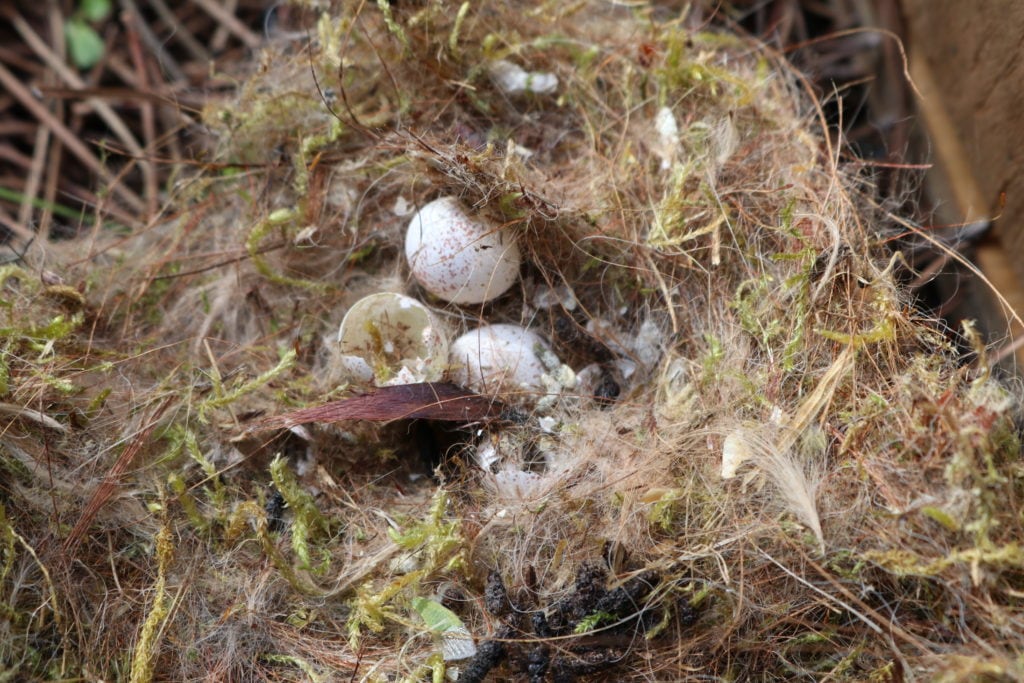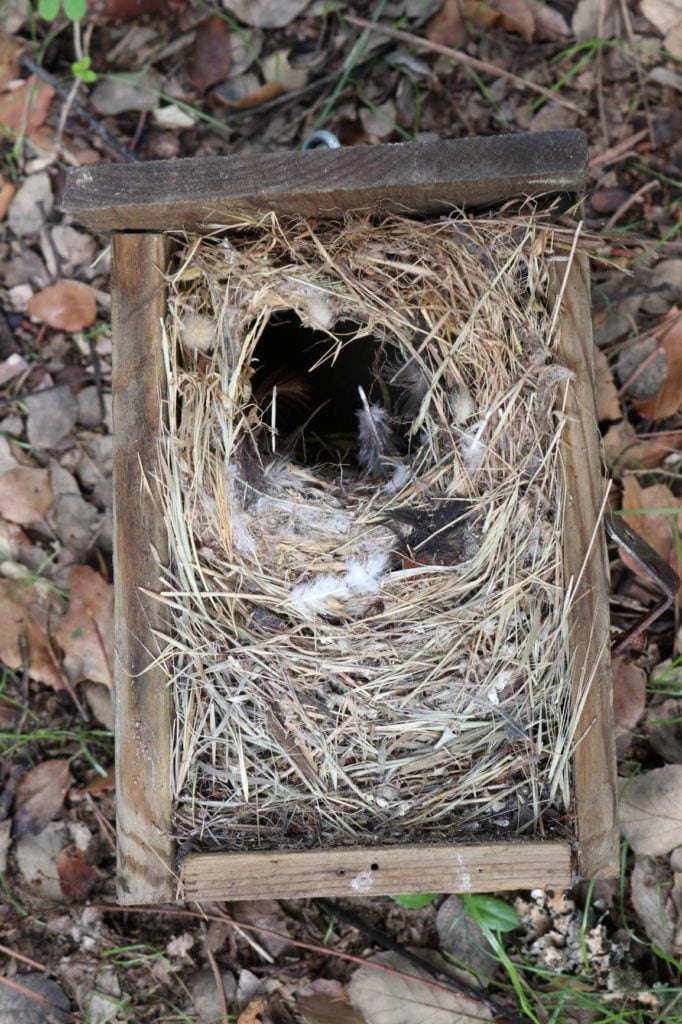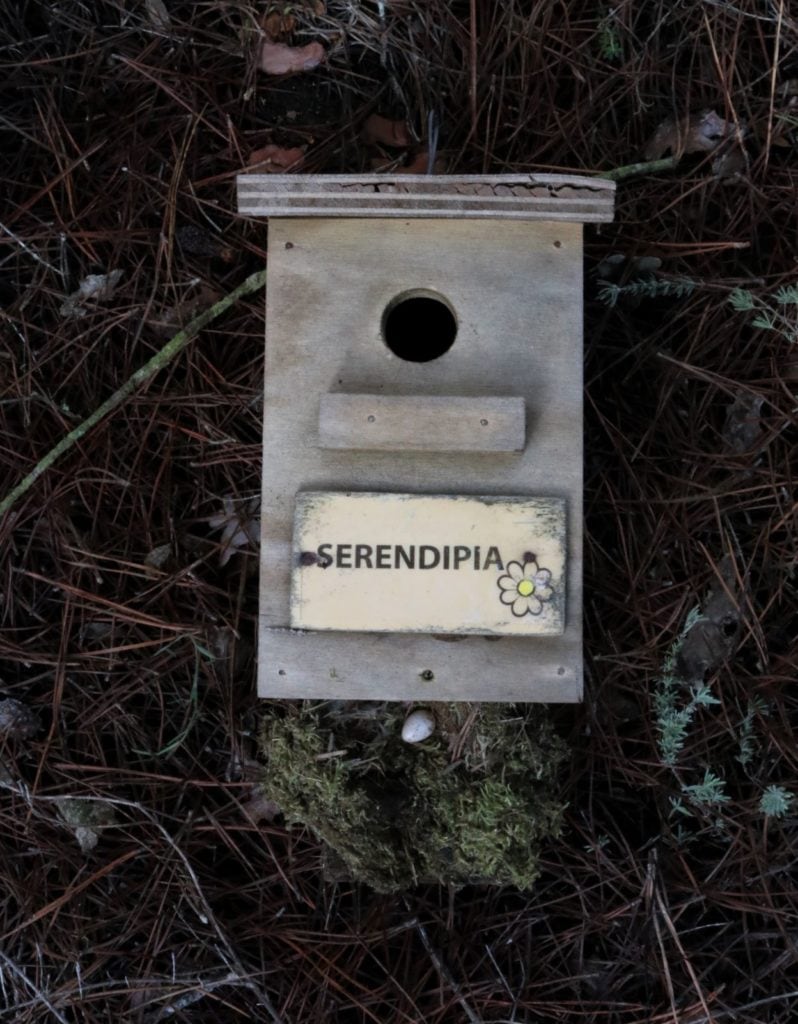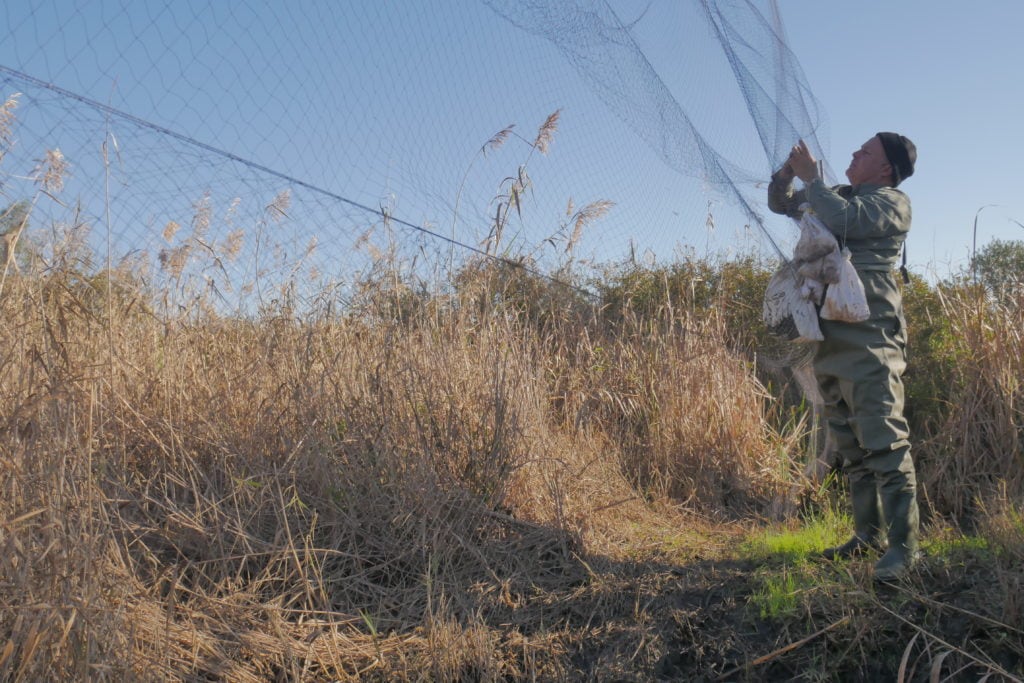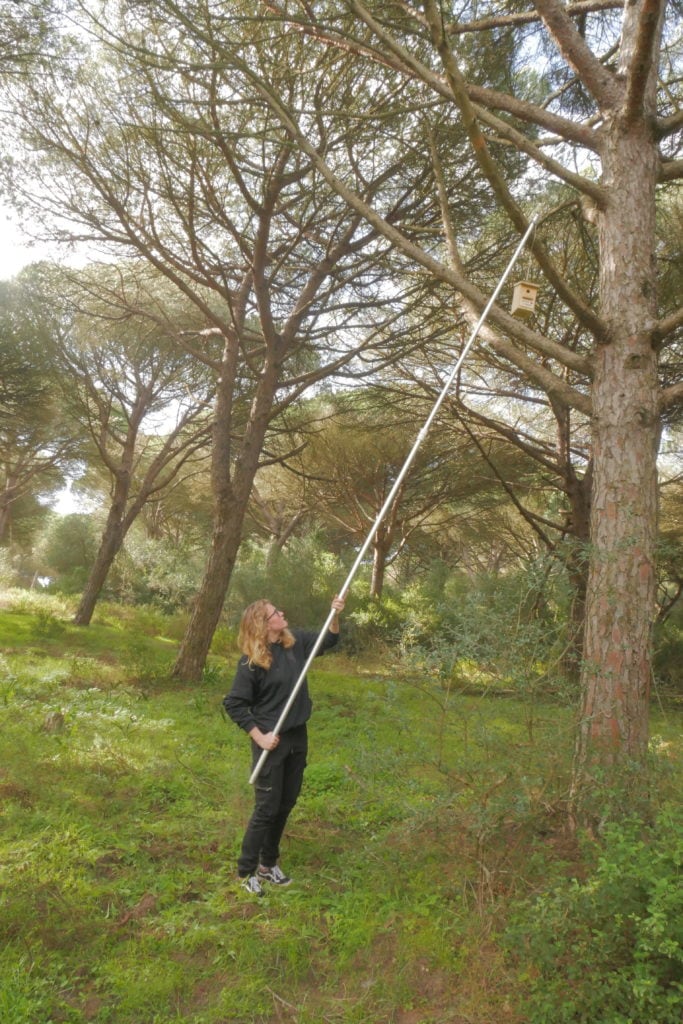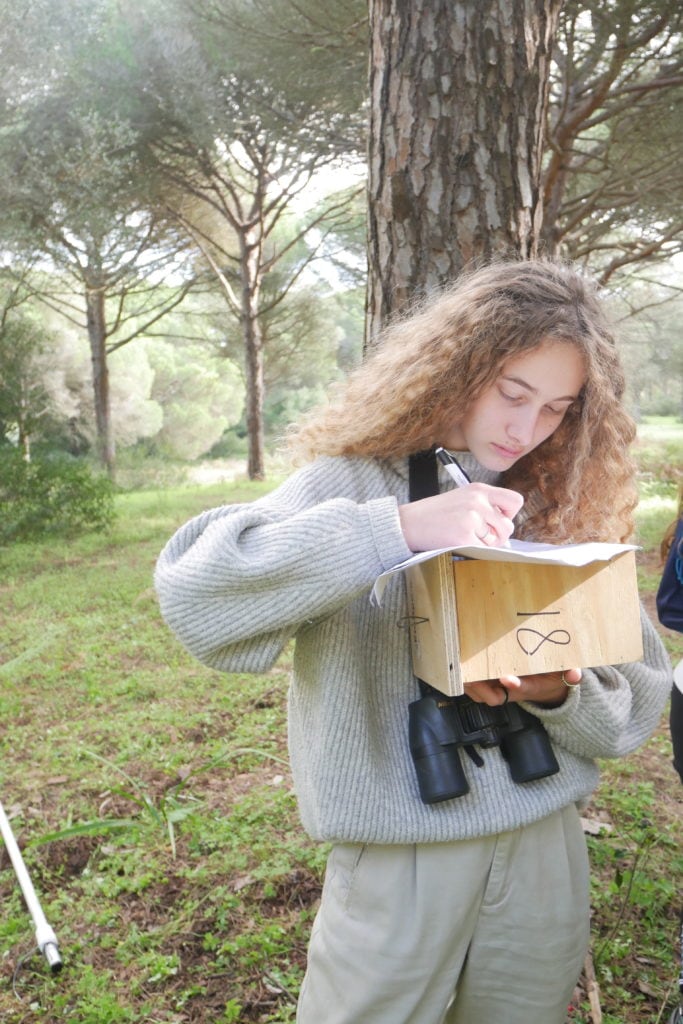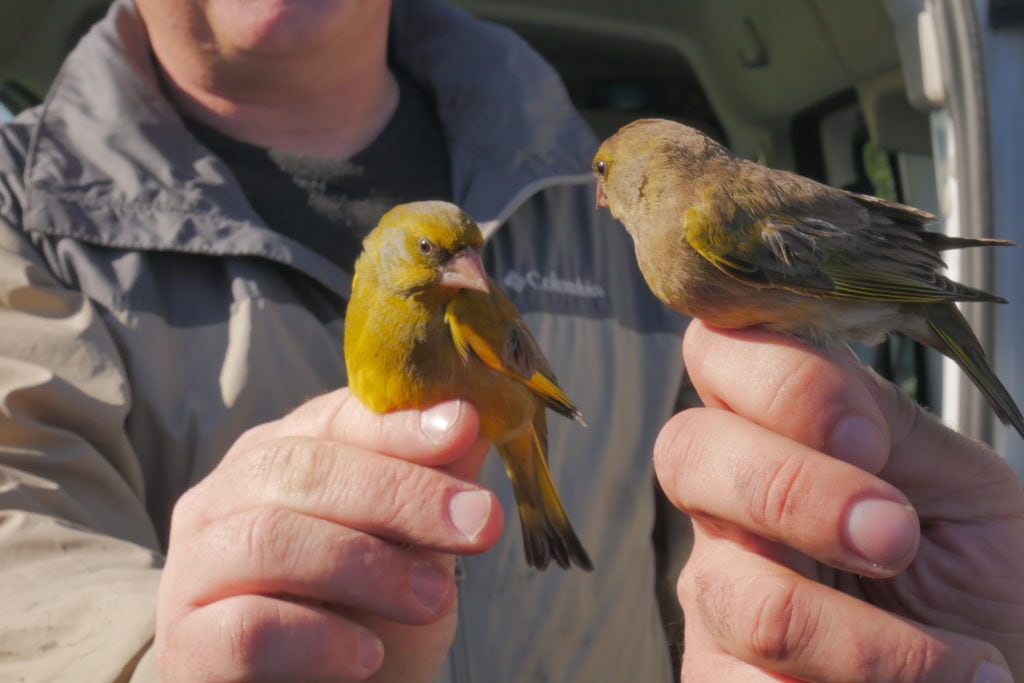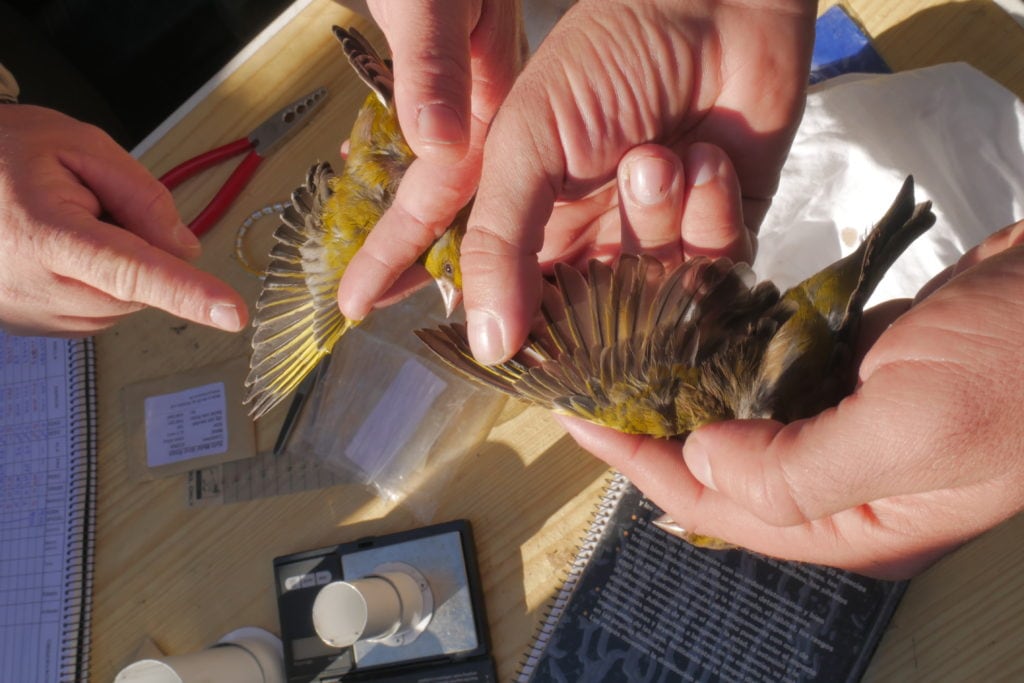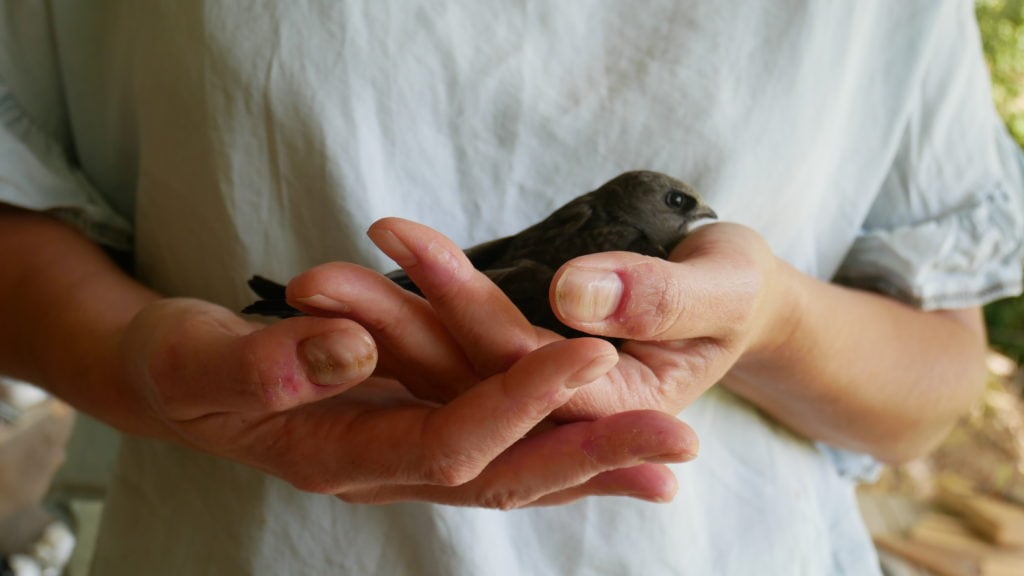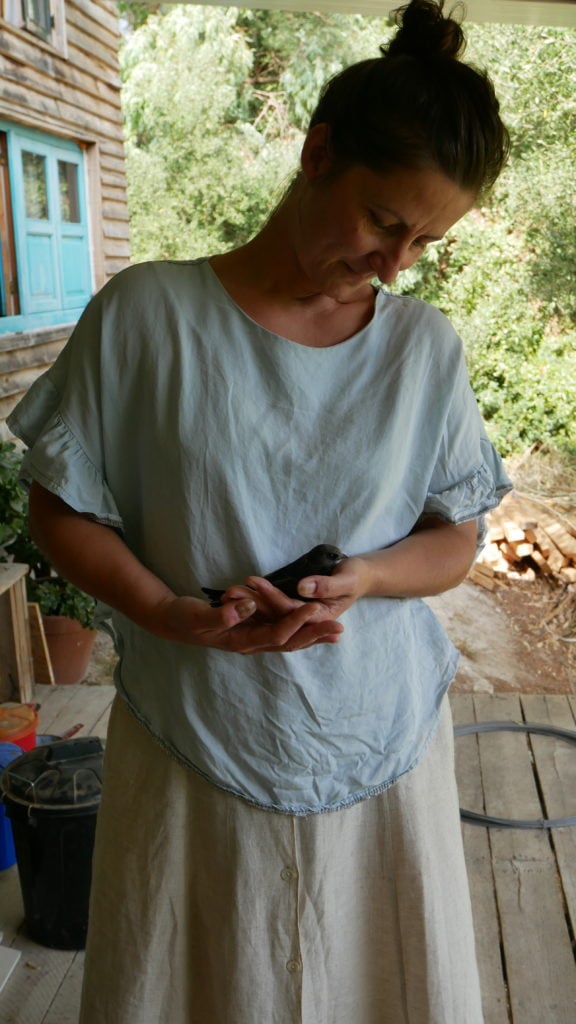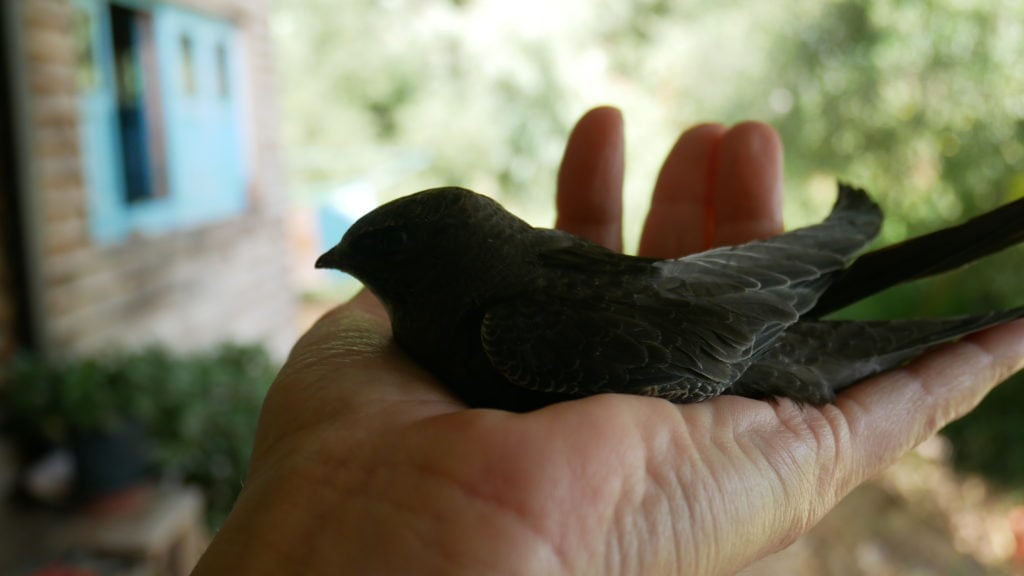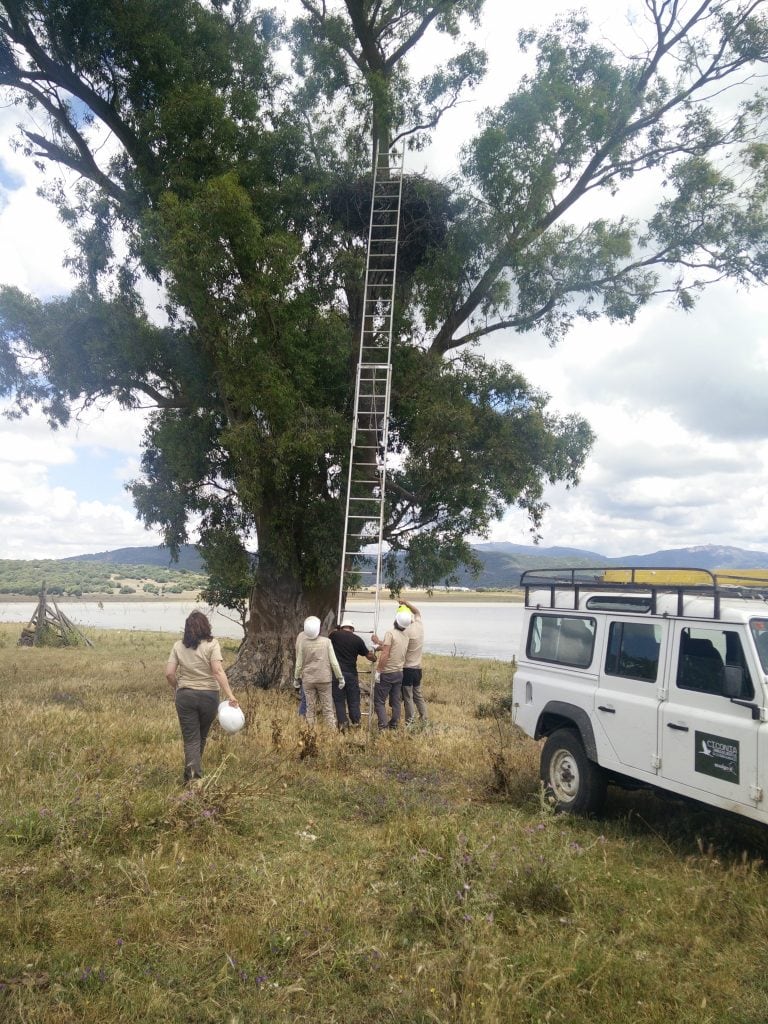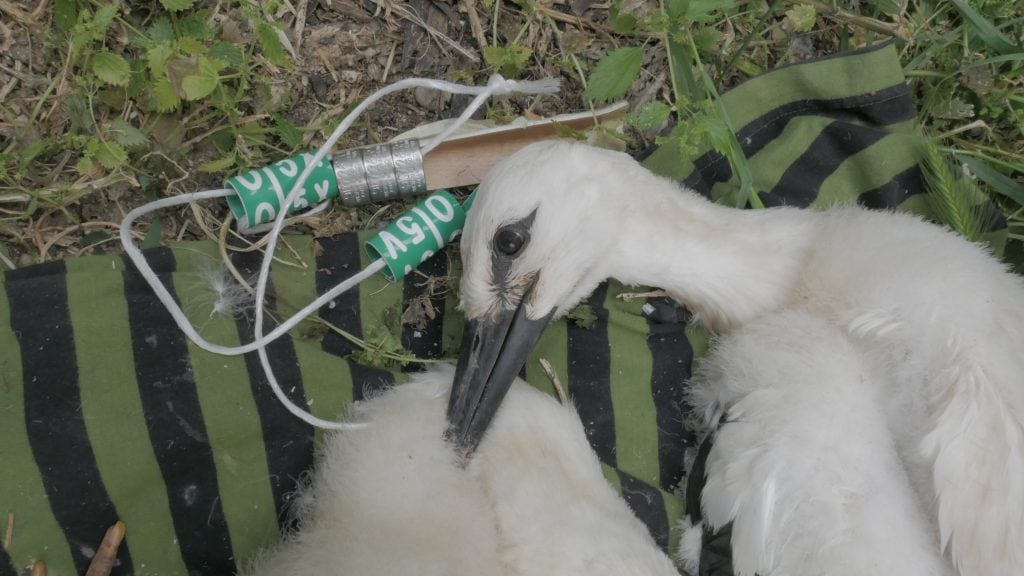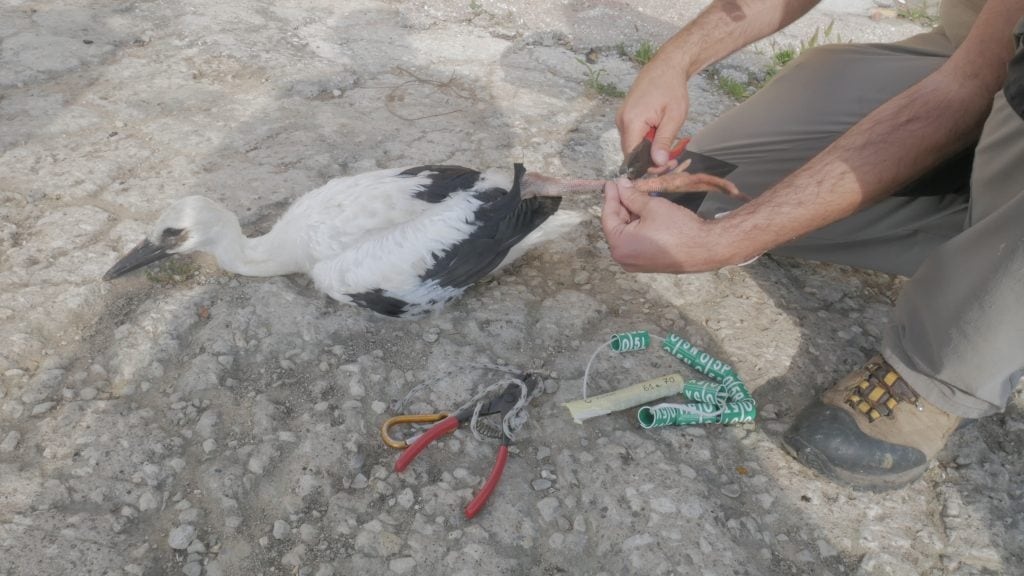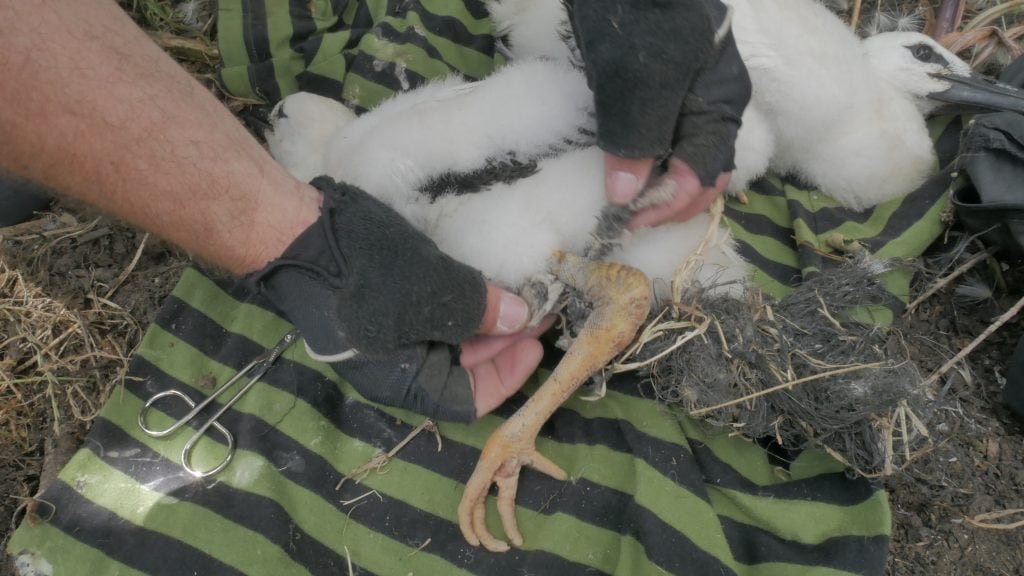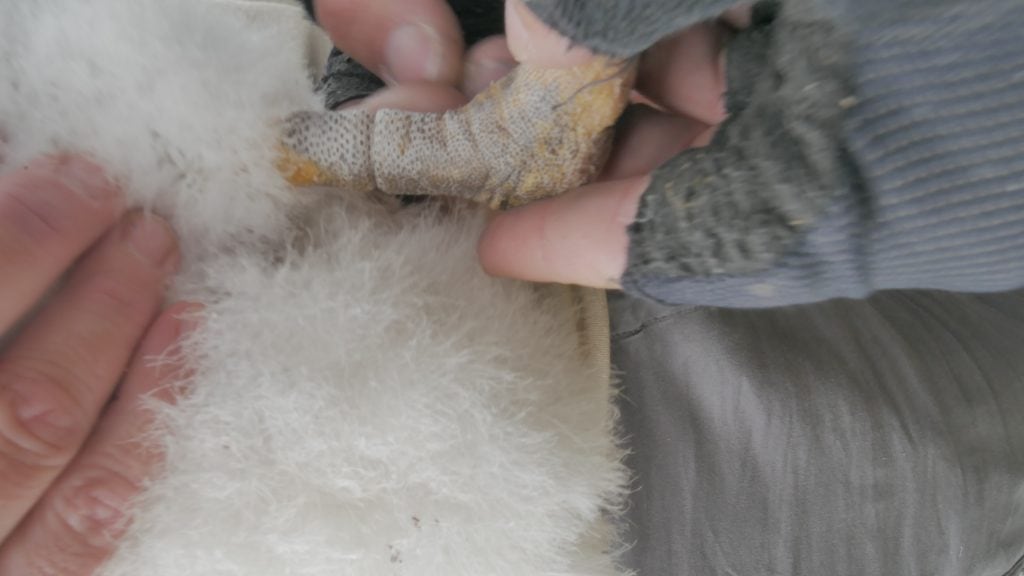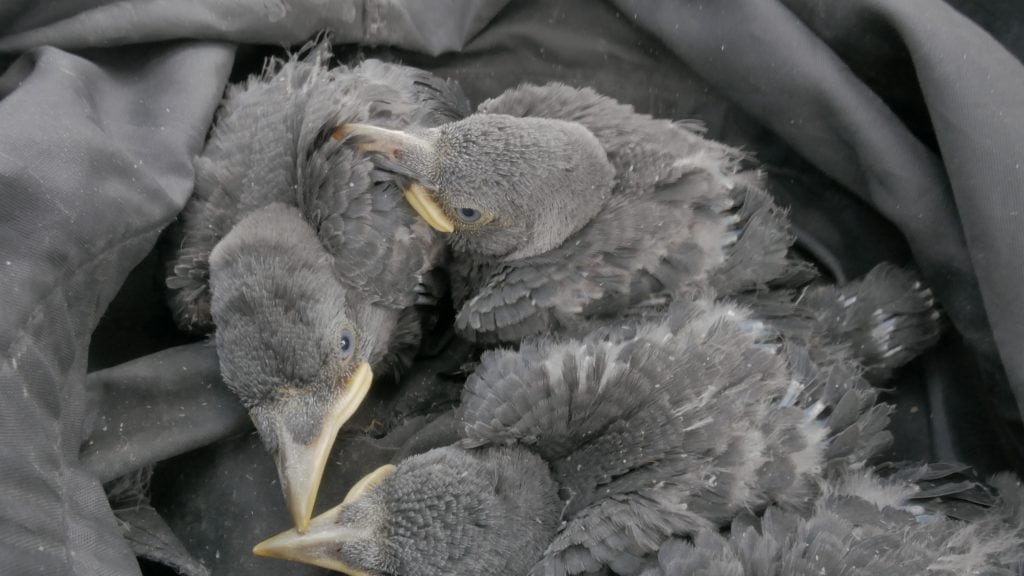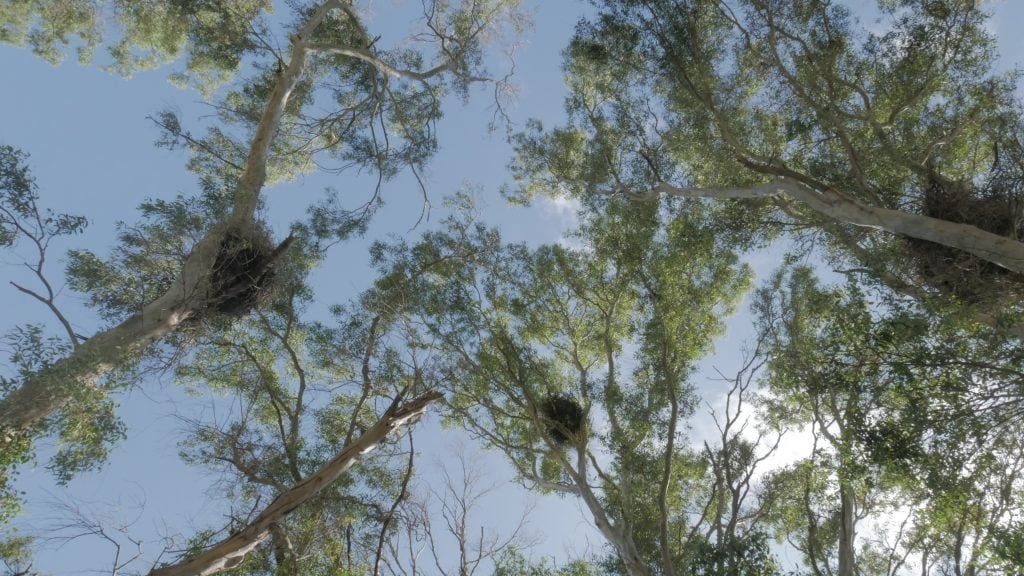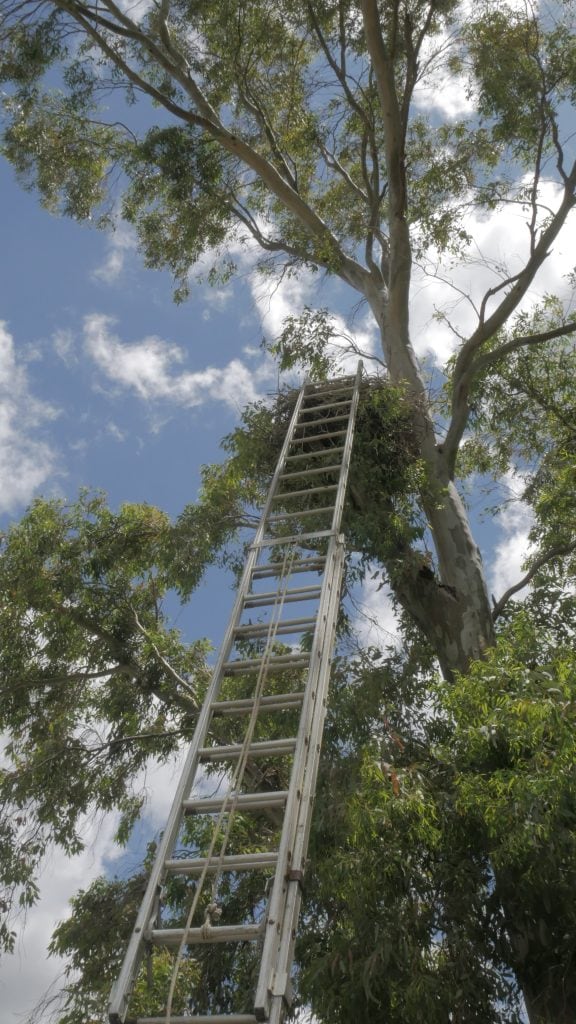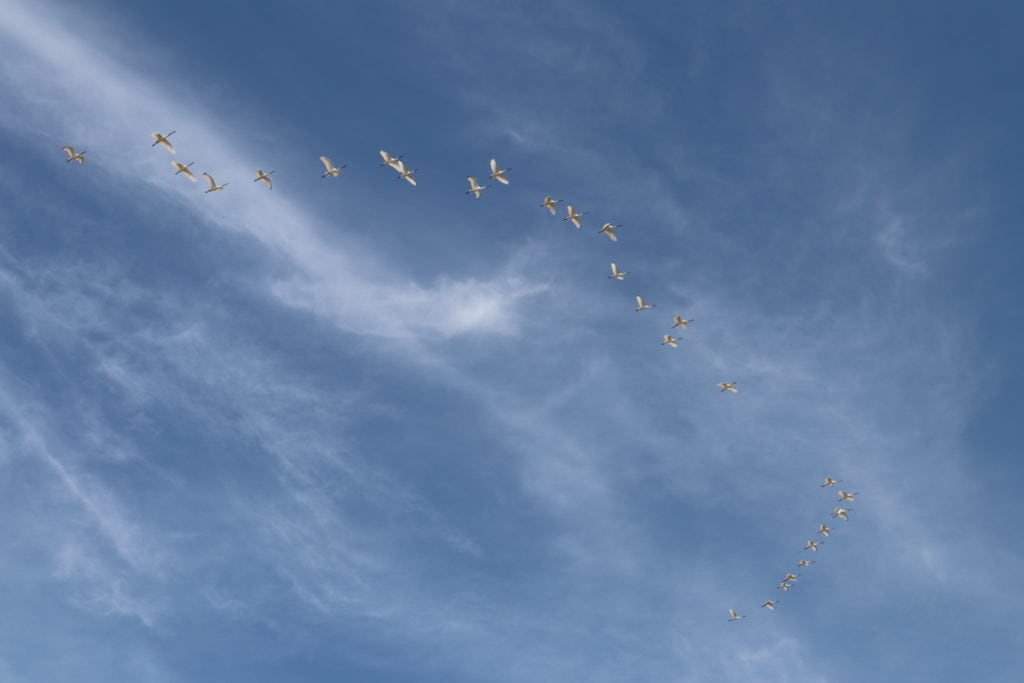
I participated in the project Limes platalea counting spoonbills migrating off the coast of Cadiz. I spent two day looking at the sky with my binoculars by the Torre de Puerco. I love sky gazing and bird watching. It was exciting when a band of spoonbills passed by but more than just the spoonbills it was the have waves of swallows, wagtails, chaffinch wash over us the whole morning. Movement moves me. Witnessing migration. Read more about spoonbill migration and this project in an article written by Paco (Francisco Hortes) one of the coordinators of the Limes Project here.
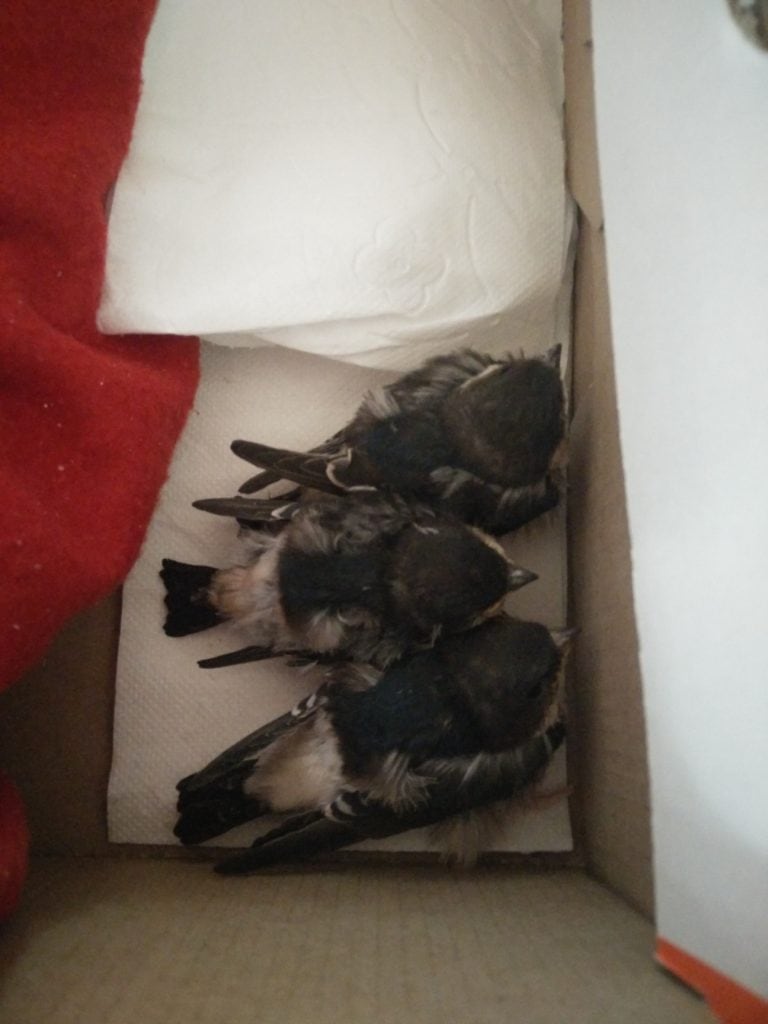
House martins build nests of mud on the facade of buildings, under eaves, in window alcoves and under balconies. They are sociable birds living in colonies of extended families. They are migratory but will return to reuse the same nest sites year after year.
These house martins had been nesting above the blind in a window, when it was shut the nest fell. The house was neighbouring my studio and I was contacted to take care of the birds. Being insectivorous they eat only insects, anything else can be damaging to their development or even fatal.
I fed them wax worms and luckily they fed easily. Sometimes with older birds they refuse food, recognising that it is not coming from its parent and so they have to be force fed to begin with. They have to be fed at regular intervals and it can be quite demanding. Fortunately I fell in love right away and was more than happy to serve them. Their chirruping sounds make my heart skip and I wake up each morning excited that I will get to see them.
When I care for baby birds I sway between a swelling love and profound respect for the wild. I limit contact to the minimal. I know that this will serve them best when they are released.
This trio thrived. And then they flew away.

Late August into early September was a strange time. The day we arrived back to Spain from England my daughter suffered stomach cramps which turned out to be appendicitis. A trip to the doctor rapidly turned into a hospital stay which we weren’t prepared for. It was a whirl of a time, 24 hour hospital days, sleeping in a chair and nursing my not so little baby. On the day we were allowed home I took delivery of two swifts from my friend Nando. He had to return to work so didn’t have the time for their demanding feeding. I went from caring motherly mode for my injured daughter to caring for two wild birds in a blink.
Swifts are very special birds and I would come to appreciate this more each day as I cared for them. Swifts spend most of their lives in flight; eating, sleeping and mating in the air only stopping to nest and rear young. Agile fast fliers, they cover hundreds of kilometres a day and are capable of eating almost their body weight in insects each day. They have adapted to nest in urban areas, in cracks or holes in buildings.
The swifts that came to me were found grounded in Barbate. When a swift is grounded they need collecting as it means there is something wrong, they are not like other fledglings that stay close to their nests as they practice flying. If they have grounded they have fallen from their nest or are dehydrated or injured.
I was careful to leave them in peace, I felt so deeply respectful of their presence. My fingers quickly learned to be adept at moving in subtle ways to handle and feed them. In the beginning I was sensitive to insect squashing, my stepson would help me crushing tens at a time so that I could feed them. But I couldn’t always depend on others and I soon became a lethal killer.
The relationship I developed with these swifts was overwhelming. I would wake excited in the morning excited to see them, and though I longed to gaze them always I kept my contact to a minimal. I read and learned about their biology, their behaviours, their migratory journeys, their breeding habits. And more than anything I fell in love.
One day they both flew and were gone just like that.
I felt it in their bodies in the morning. A sort of trembling pulsating. A restless internal energy brewing. Then they were gone. Before I could blink.
These two swifts started me on a journey that I am still travelling. It led to me develop a project to map swift colonies and I have since cared for other grounded birds. I have travelled to see other swift species and became engaged with them in a way that has motivated and inspired me. My heart still skips whenever I see swifts in flight.
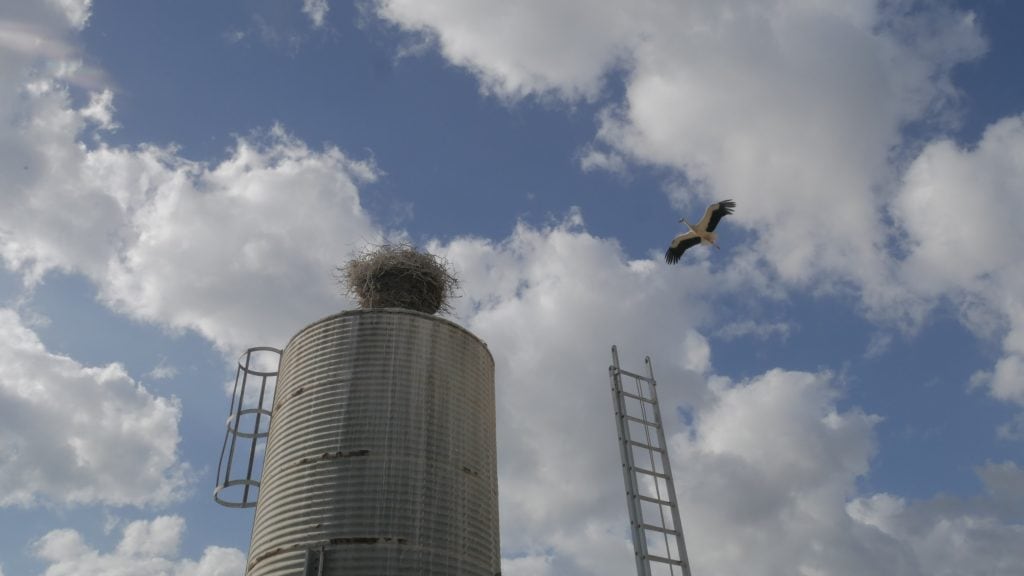
Birds are ringed so that we can study them and their movements for conservation. This project rings white storks in the Province of Cadiz in Southern Andalucia, the information gathered is used to study the migration, reproduction and behaviour of the species.
A dizzy day of very long ladders. The chatter of storks beaks. Storks circling the skies. Jackdaws.
We found a young stork tied to its nest with plastic gardening twine that the adults have used when making their nests. This one was released and escaped the horrible torture of not being able to fly the nest and dying a slow death. It escaped with a slightly deformed foot, fortunately nothing that would impede its survival. But what a terribly sad reminder of the often not so healthy relationship weaving humans with other species.
I might be inclined to believe such an occurrence is an anomaly. But in the 2008 stork ringing campaign of the 229 young that were ringed 19 were found tied to their nests.

